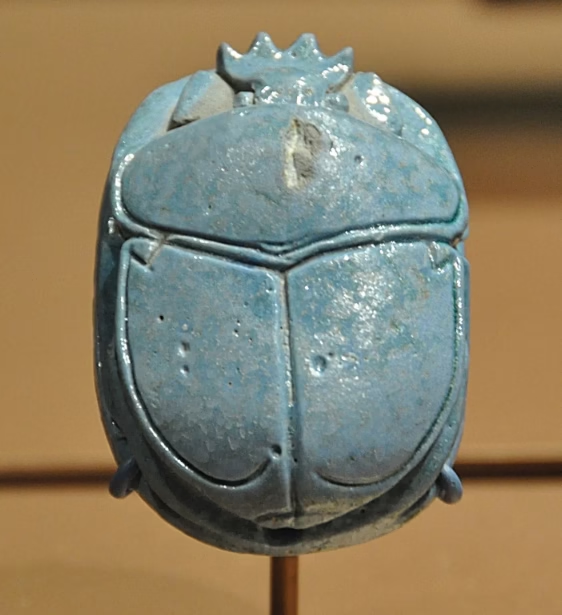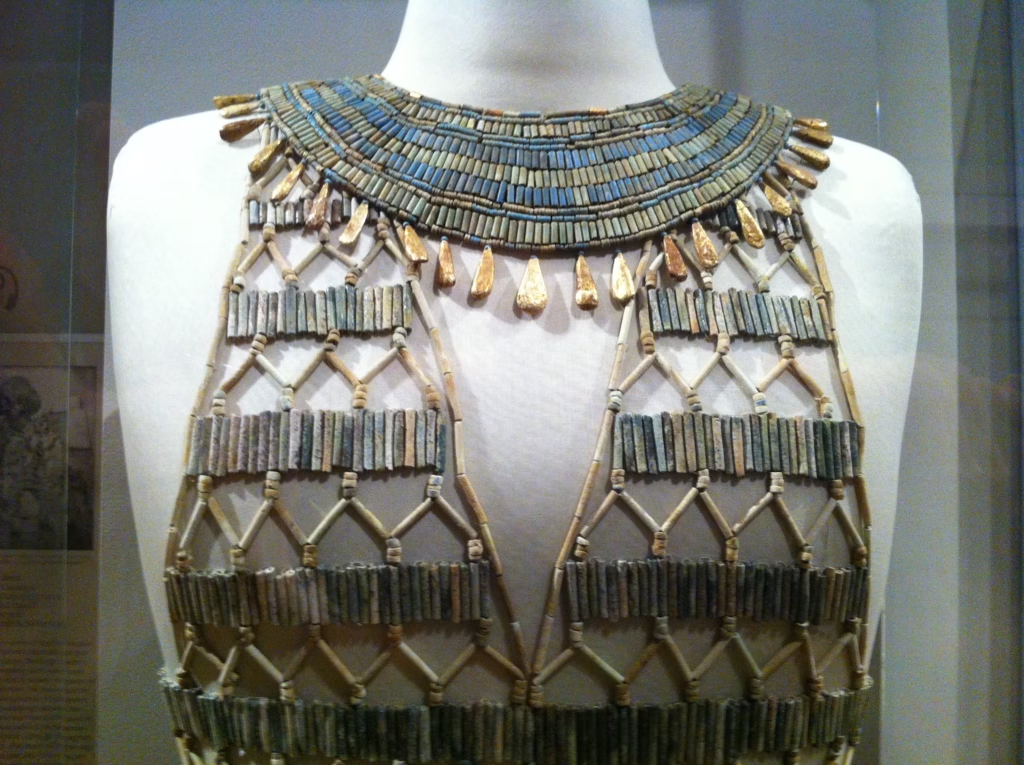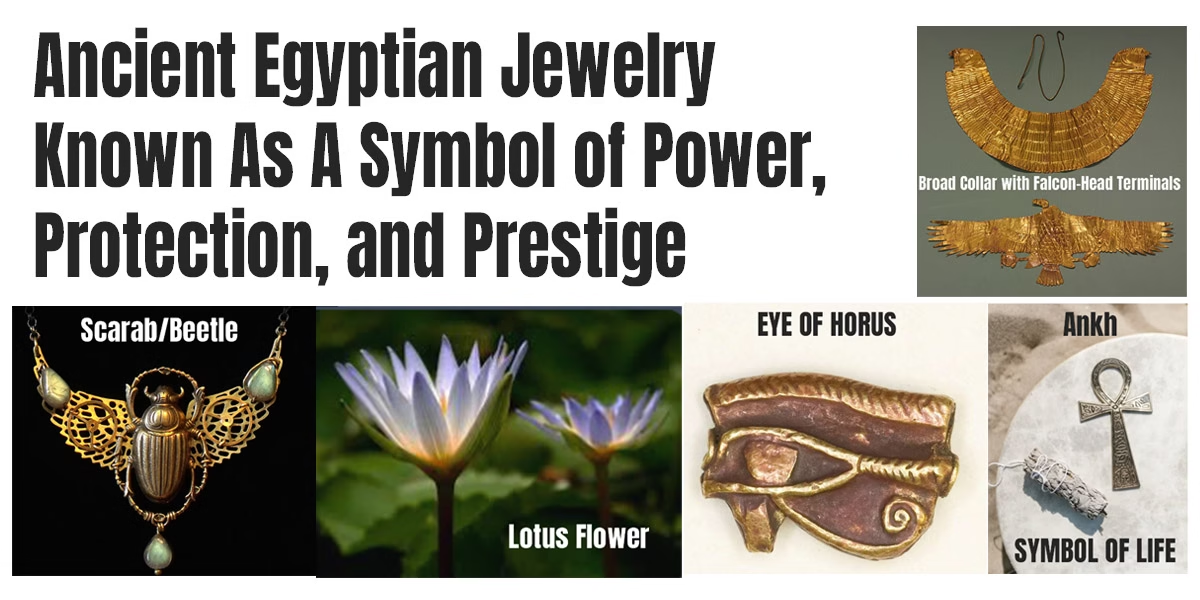Ancient Egyptian jewellery is a testament to the artistry, craftsmanship, and cultural importance of the civilization. From the wealthy pharaohs to ordinary people, jewelry held an important position in daily life, as it was both an ornament and an indicator of status, spirituality, and protection.
Materials and Techniques
Egyptian jewellery was made of an, assortment of materials, from gold and silver to semi-precious stones and faience. Gold, which originated from Nubia, was the metal of choice because it was associated with the gods. Silver, as rare as it was, was also greatly cherished. Techniques in crafting included casting, engraving, and filigree with which artisans worked to produce highly ornate works of art filled with gemstones such as lapis lazuli, turquoise, carnelian, and amethyst. Such stones were felt to have magical and healing properties.
Symbolism and Meaning

Marriage scarab of Amenhotep III and Queen Tiy, glazed faience, c. 1390–53 bce; in the Brooklyn Museum, New York. 2.8 × 5 × 7 cm.
Egyptian jewellery was not about just decoration—it was symbolic. Common themes were:
Scarab Beetle: Symbolized rebirth and protection.
Ankh: Meant life and immortality.
Eye of Horus (Wedjat Eye): Thought to bring protection and repel evil.
Lotus Flower: Symbolized purity, creation, and rebirth.
Falcon and Vulture: Linked with the gods Horus and Nekhbet, representing power and divine protection.

Types of Egyptian Jewellery
Wesekhs (Collars): Wide, beaded necklaces for men and women with rows of complicated beads and gold ornaments.
Armlets and Bracelets: Faience, bead, or gold, these were worn for rituals and decoration purposes.
Signets and Rings: For personal ornaments as well as official seals to be used for administration and commerce.
Amulets: Worn for protection, the charms were put into jewelry or burial grounds to provide safe passage to the afterlife.
Diadems and Crowns: Kept by royalty, the headpieces were elaborately adorned with symbolic motifs.
Egyptian beadnet dress from the reign of Khufu, 4th Dynasty, Old Kingdom of Egypt, 2551-2528 BCE.
This beadnet dress is the earliest surviving example of a garment with the lozenge pattern. This pattern is frequently used when depicting women‘s clothing in Egyptian art. Although the string had deteriorated, many of the beads were found in their original pattern. It is unclear whether the beadnet dress was sewn into the clothing or worn as a separate net over the linen.
Image courtesy: Uploaded by Jennifer Brown, published on 10 June 2014.

Jewelry in Daily Life and the Afterlife Jewellery
was used on a daily basis by Egyptians regardless of social status, although the materials applied varied according to status. The nobility decked themselves with gemstones and gold, but the masses donned items made of faience and copper. When they died, jewelry was an important factor, as it was placed in the grave with them to offer protection and a good afterlife. The Tutankhamun tomb, renowned throughout the world, uncovered a remarkable array of exquisite jewelry that illustrated the riches and skill of Egyptian craftsmen.
The jewelry of Ancient Egypt is still one of the most intriguing features of the civilization’s cultural life. With its elaborate patterns, rich symbolism, and exquisite craftsmanship, it remains a source of inspiration for contemporary jewelry designers and historians. Whether it was worn to signal wealth, as a spiritual amulet, or as a royal symbol, Egyptian jewelry is a testament to a culture that cherished beauty, protection, and immortality.
More Articles and blogs related to Gems & Jewellery
For more articles blogs checkout www.dreamsanimatedstudios.com
Facebook: Link






